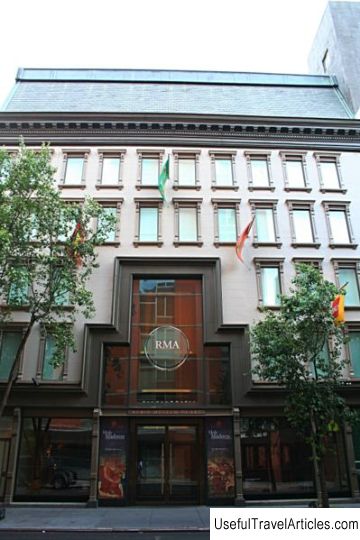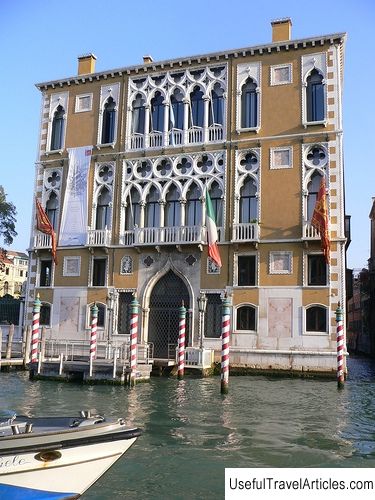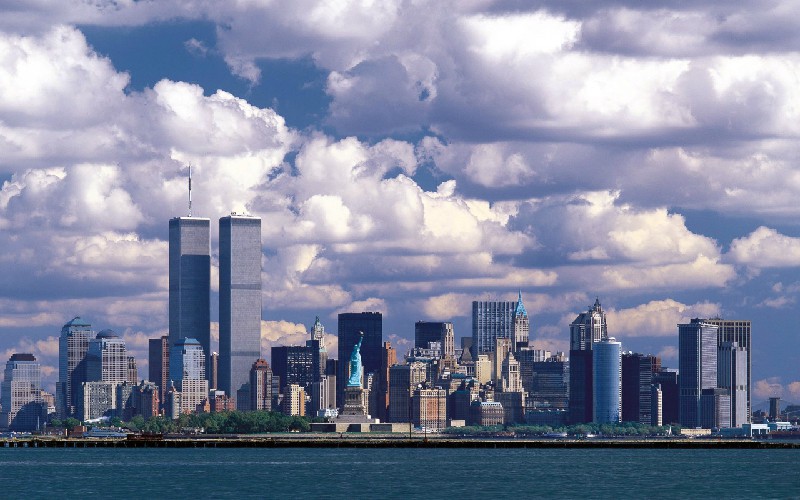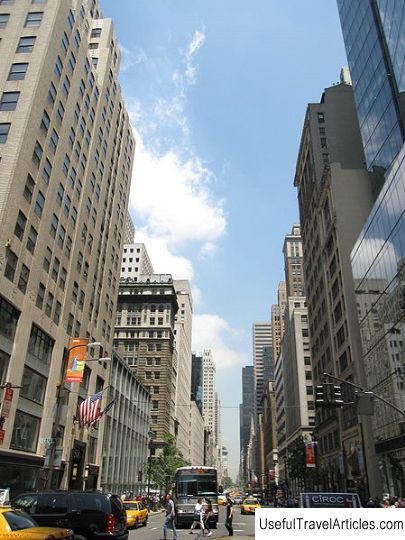Rubin Museum of Art description and photos - USA: New York
Rating: 8,2/10 (1983 votes) 
Rubin Museum of Art description and photos - USA: New York. Detailed information about the attraction. Description, photographs and a map showing the nearest significant objects. The title in English is Rubin Museum of Art. Photo and descriptionThe Rubin Art Museum is relatively new (it was opened in 2004), but already the largest and most significant museum in the United States, entirely dedicated to the art of the Himalayas and surrounding areas, mainly Tibet. One evening in 1998, businessman Donald Rubin got stuck in a New York traffic jam. His taxi was parked on 17th Street, opposite the dark, empty building of Barney's former department store (two years earlier, the company that owned a chain of luxury department stores had gone bankrupt). It instantly dawned on Rubin - he decided to buy the building and turn it into a new museum. What the museum should be about, Rubin had no doubts - he and his wife Shelley had been collecting Himalayan art since 1974. Then they were not yet rich or art lovers, and they would hardly have found the Himalayas on the map. Rubies accidentally saw a painting depicting White Tara (Buddha in female form) in a gallery on Madison Avenue. This first purchase was the beginning of a passion for their lives. The department store was remodeled for a museum by the heritage conservation firm Blair Blinder Bell. Although the facade was stylized in a Buddhist spirit, many of the interior details have survived - in particular, the original six-story spiral staircase made of marble and steel by interior designer Andre Putman. Once this staircase led to the section where dresses for 35 thousand dollars were hanging, but now it has become the center of the exhibition space, which occupies 2300 square meters. The opening of the museum was magnificent and was accompanied by the launch of kites and a parade of Himalayan dogs. Now about 2 thousand exhibits are exhibited here - painting, sculpture, textiles, as well as ritual objects from the 2nd to the 20th centuries. All this was collected in the territory that includes Tibet, Nepal, Mongolia and Bhutan. Visitors get acquainted with the main styles of Buddhist art, with special materials and technologies - for example, paintings on religious themes (thangka) are painted with glue paints on the fabric. The Himalayan tankas are very spectacular, sometimes frightening - you can see deities with nightmarish fangs, removed elephant skins, necklaces of skulls or severed heads, mules with eyes on their sides, all this is usually in bright colors. For a connoisseur, every detail of the tank says a lot, there is not a single random element in the paintings. An ordinary tourist will probably come up with a thought: how strange that all these images intended for meditation,      We also recommend reading Ulmer Museum description and photos - Germany: Ulm Topic: Rubin Museum of Art description and photos - USA: New York. |




